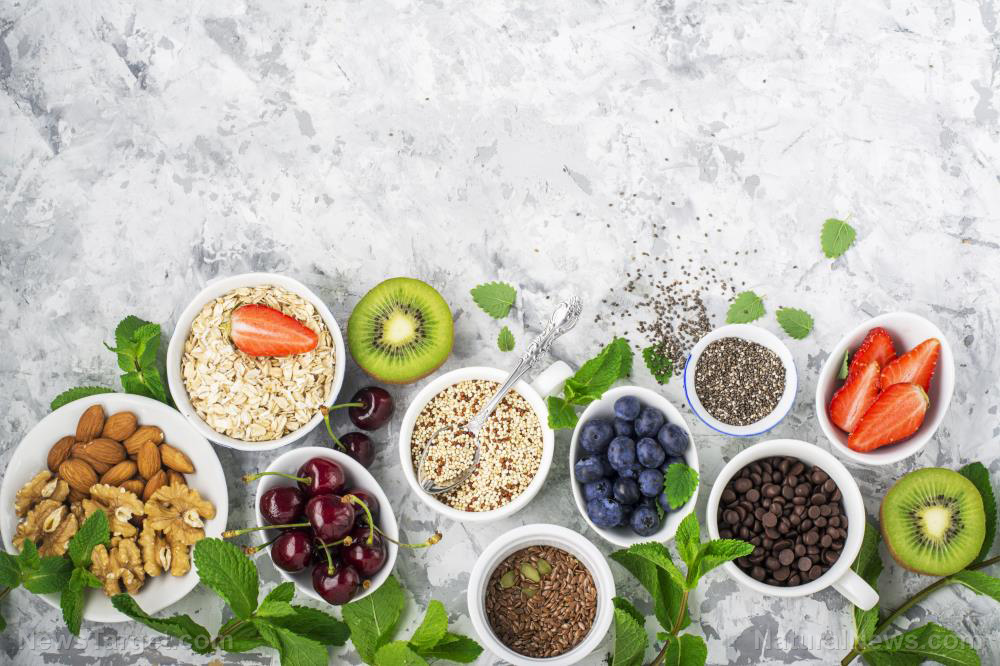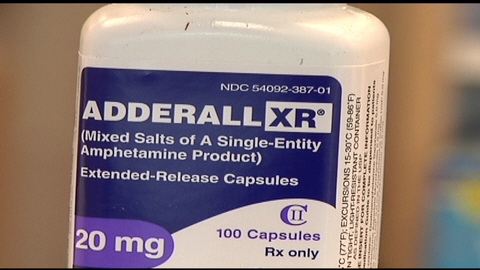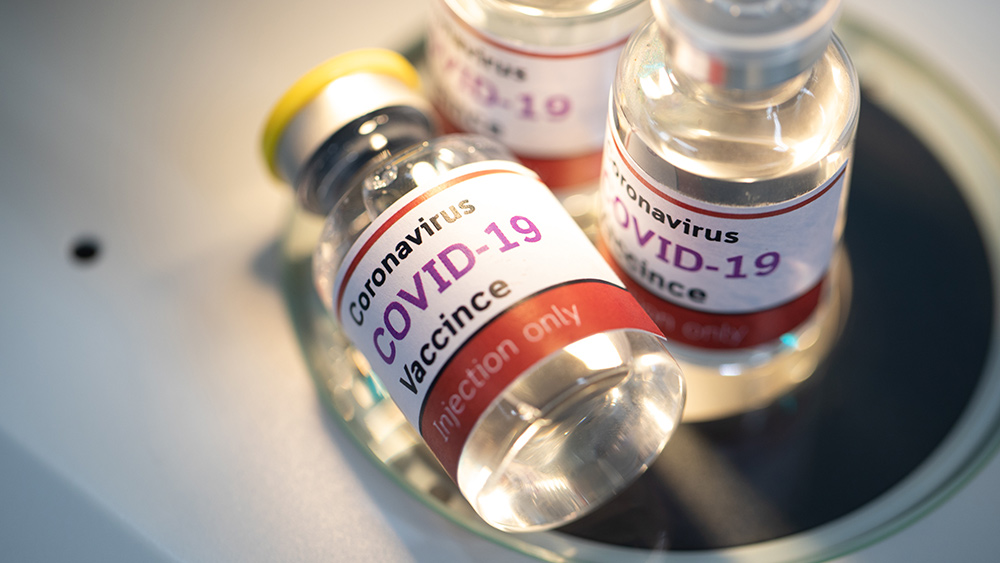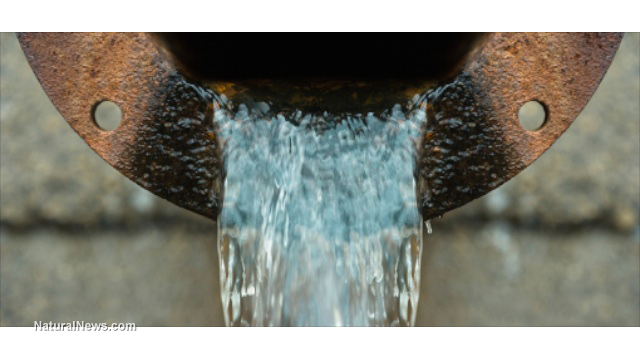Food storage tips: 11 Superfoods that boost your nutrient intake
08/22/2022 / By Zoey Sky

Most prepper stockpiles have pantry staples like beans and rice. But even if you stock up on a lot of canned food, your diet will require other nutritious ingredients so you can stay healthy and strong after SHTF.
While preparing for a survival scenario, stock up on superfoods like berries and dark leafy greens or plant them in your home garden. (h/t to TheSurvivalMom.com)
Superfoods are nutrient-dense, low-calorie foods that are rich in antioxidants, minerals and vitamins. Eating a balanced diet full of superfoods will help protect you against inflammation, cancer and cholesterol and give your immune systems a boost.
Despite the impressive name, superfoods aren’t a silver bullet. The term refers to foods that research has shown to be particularly effective at preventing illnesses, especially when combined with healthy life habits like exercising regularly and avoiding smoking.
You may not realize it, but various superfoods are probably already a part of your regular diet and food storage. If not, stocking up on superfoods will help you keep your strength up when dealing with survival scenarios.
There are many superfoods that you can buy, but those listed below are widely available and easy to store or grow in your garden.
Berries
Berries are rich in antioxidants, fiber and vitamins. Studies suggest that eating berries can help protect against cancer, stabilize blood sugar and boost heart health.
Berries are also easy to store, grow and forage. These berries are easily accessible in the U.S. and available freeze-dried if you want them to last longer in your stockpile.

Another option is to learn how to can berries using a water bath or pressure canner. You can also dehydrate and grind berries to make fruit powders and maximize space.
Blueberries
Blueberries are full of vitamins C and K, two cell-protecting antioxidants. These vitamins also help stabilize blood sugar.
To ensure that they last long, get freeze-dried blueberries that should last 10-15 years unopened. Blueberries are also available canned, dehydrated, frozen, or powdered.
Cranberries
Cranberries are bitter and usually consumed sweetened. Cranberries are also rich in beneficial antioxidants and vitamins.
Raspberries
Raspberries are full of dietary fiber and they grow in most climate zones. However, they will grow rampant if not contained.
You can also forage them in mountain meadows.
Strawberries
Strawberries contain vitamin C and they can help reduce inflammation and control blood sugar.
Strawberries will grow almost anywhere in the United States. If you’re going to plant them in a garden, give the berries plenty of space to spread out. (Related: Food supply tips: 7 Vegetables to grow for your food stockpile.)
Dark leafy greens
Dark leafy green vegetables are one of the easiest superfoods to stockpile.
Here are some suggestions on how to stock up on leafy greens before SHTF:
- Add canned or freeze-dried kale or spinach to your long-term food storage. After disaster strikes, add a handful of the freeze-dried greens into soups to boost your intake of vitamins A and C.
- Include powdered greens in your food storage. This option is shelf-stable and can be added to smoothies or other foods.
- Dark leafy greens are easy to grow. Most vegetables will thrive in a garden, a cold frame, or inside your house. For quick indoor harvests, try growing microgreens or sprouts.
- Learn to can your own greens. Excess harvests in the summer can keep you healthy throughout winter.
- Forage dandelion and other greens in the spring and summer.
Here are some leafy greens to stock up on or plant in your garden:
- Beet greens
- Bok choy
- Cabbage
- Collard greens
- Dandelion greens
- Endives
- Kale
- Microgreens
- Mustard greens
- Romaine lettuce
- Spinach
- Swiss chard
- Turnip greens
Eggs
Eggs are common, but they’re considered a superfood because they are a complete protein. Eggs are full of vitamins and they are also heart-healthy.
If you have space in your homestead, raise chickens for fresh eggs and meat.
Garlic
Garlic is a must-have seasoning and an impressive superfood. It can help prevent cancer and lower cholesterol. Garlic is also a natural blood sugar stabilizer and immunity booster.
For long-term storage, use freeze-dried or dehydrated garlic.
You can also grow garlic from a bulb.
- Select large, healthy cloves from organic garlic bulbs. The larger the clove, the bigger and healthier the bulb will be.
- Break the cloves apart from the bulb a few days before planting. Keep the papery husk on each individual clove.
- Plant cloves four to eight inches apart and two inches deep in their upright position. This means the wider root side should be facing down and the pointed end facing up.
- Plant the cloves in rows spaced six to 12 inches apart. A single 10-foot row will yield about five pounds of garlic, depending on the variety.
- Keep weeds out of the planting site.
- Water garlic every three to five days during bulbing season in mid-May through June. If May and June are very dry, irrigate to a depth of two feet every eight to 10 days. As mid-June approaches, taper off watering.
- Harvest from fall plantings will range from late June to August. If you planted in the spring, calculate the approximate harvest date based on the “days to maturity” of the planted garlic variety. Look for yellowing foliage. Harvest when the tops begin to yellow and fall over, but before they become completely dry.
Alternatively, you can stock up on granulated garlic for cooking.
Lentils
Lentils are cheap and easy to store. They are full of protein, folate and other minerals.
When stored properly, dried lentils will last for many years.
Mushrooms
Mushrooms contain B vitamins, vitamin D and potassium. They are good for your bone health and for strengthening your immune system.
Buy mushrooms in cans and jars, freeze-dried, or as powdered.
Nuts
Nuts can become rancid if not correctly stored.
Fortunately, you can freeze nuts for a year or more. Refrigerated nuts will last for up to six months. But when properly sealed with an oxygen absorber, nuts could last for at least two years
Nuts contain dietary fiber, protein and healthy oils.
Pumpkins
Pumpkins are full of nutrients like beta-carotene, fiber, iron, zinc and vitamin C. You can use pumpkins to make pies or soup.
Buy canned pumpkins or grow them in your garden. Fresh pumpkin can be pressure canned and you can toast the seeds.
Pumpkins will grow almost anywhere in the U.S. as long as they have a lot of space to spread out.
Salmon
Salmon is a lean protein full of omega-3 oils that are good for your heart and brain.
Spices
Most spices favor tropical climates not found outside of Florida or a greenhouse and you may find it easier to store them.
Buy spices in large quantities for a lower price per ounce, then divide the spices into smaller containers that are airtight. Stock up on nutritious spices like cinnamon, which is good for your heart health.
Ginger has strong antibacterial and antiviral properties and it can help relieve stomach issues. Turmeric is a natural anti-inflammatory and it contains compounds that boost brain health and protect against heart disease.
Sweet potatoes
Just one sweet potato contains 400 percent of the recommended dietary allowance for vitamin A.
Sweet potatoes also contain antioxidants, vitamins and minerals. This superfood can help boost your eye and immune health.
To store sweet potatoes, keep them in a cool, dark place for several months. Sweet potatoes can also be pressure canned in jars for at least a year.
You can also buy cans of chopped and pureed sweet potatoes. Sweet potatoes prefer warm, humid climates to grow, but short-season varieties are available for planting in most zones.
If someone in the family is allergic to any of these fruits and vegetables, replace them with another superfood.
Choose superfoods that your family likes to eat and can be used in different recipes after SHTF.
Visit FoodFreedom.news to learn more about food storage.
Watch the video below to know more about five berries you can grow in containers.
This video is from the Backyard Farming channel on Brighteon.com.
More related stories:
Prepping tips: How to build a stockpile if you are lactose intolerant.
12 Wild summer edibles to harvest for your food stockpile.
Prepper must-haves: Here’s why you need protein powder in your food stockpile.
Sources include:
Submit a correction >>
Tagged Under:
food freedom, food stockpile, Food storage, food supply, homesteading, off grid, organics, preparedness, Preppers, prepping, prepping tips, survival, survival food, Survival Tips
This article may contain statements that reflect the opinion of the author




















